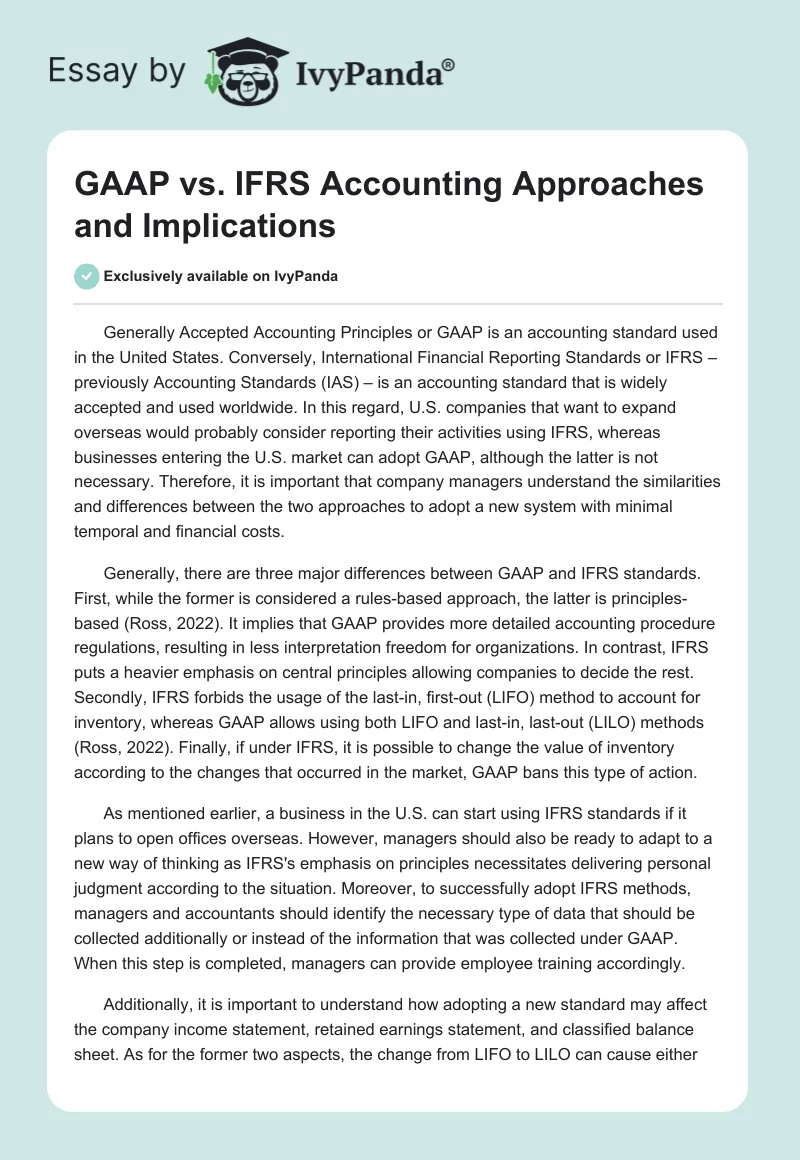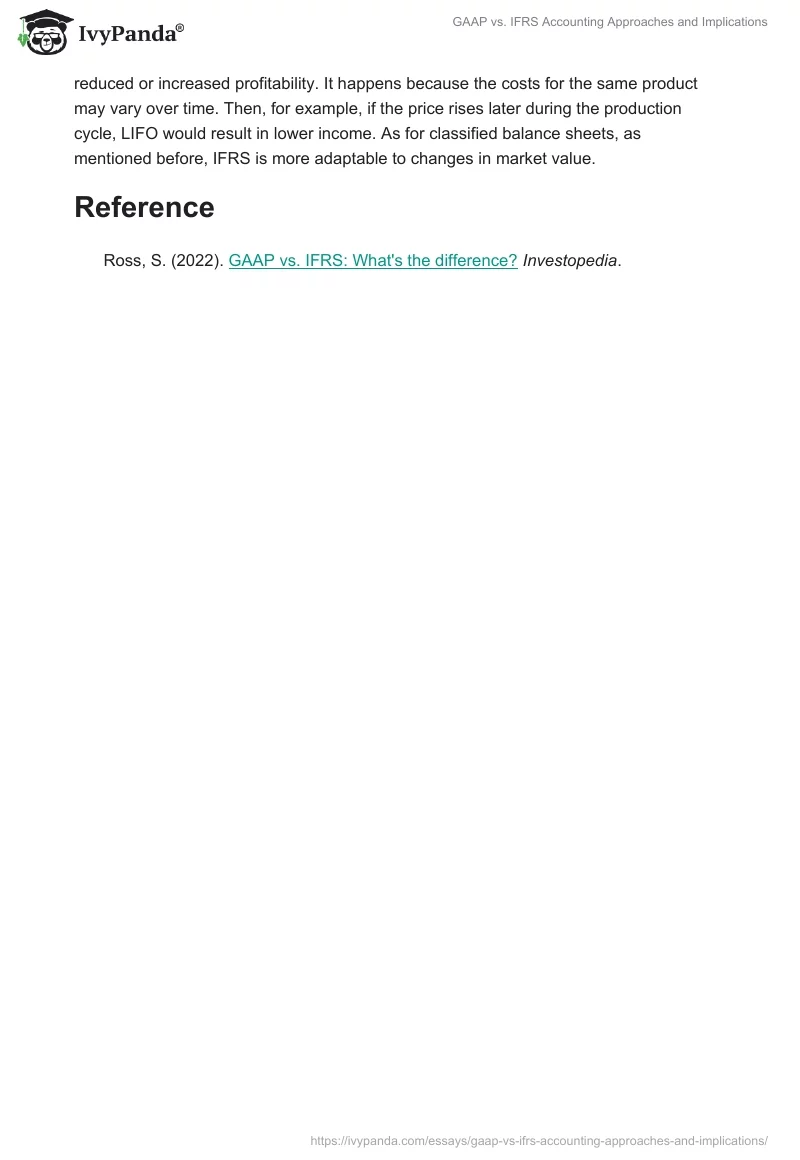Generally Accepted Accounting Principles or GAAP is an accounting standard used in the United States. Conversely, International Financial Reporting Standards or IFRS – previously Accounting Standards (IAS) – is an accounting standard that is widely accepted and used worldwide. In this regard, U.S. companies that want to expand overseas would probably consider reporting their activities using IFRS, whereas businesses entering the U.S. market can adopt GAAP, although the latter is not necessary. Therefore, it is important that company managers understand the similarities and differences between the two approaches to adopt a new system with minimal temporal and financial costs.
Generally, there are three major differences between GAAP and IFRS standards. First, while the former is considered a rules-based approach, the latter is principles-based (Ross, 2022). It implies that GAAP provides more detailed accounting procedure regulations, resulting in less interpretation freedom for organizations. In contrast, IFRS puts a heavier emphasis on central principles allowing companies to decide the rest. Secondly, IFRS forbids the usage of the last-in, first-out (LIFO) method to account for inventory, whereas GAAP allows using both LIFO and last-in, last-out (LILO) methods (Ross, 2022). Finally, if under IFRS, it is possible to change the value of inventory according to the changes that occurred in the market, GAAP bans this type of action.
As mentioned earlier, a business in the U.S. can start using IFRS standards if it plans to open offices overseas. However, managers should also be ready to adapt to a new way of thinking as IFRS’s emphasis on principles necessitates delivering personal judgment according to the situation. Moreover, to successfully adopt IFRS methods, managers and accountants should identify the necessary type of data that should be collected additionally or instead of the information that was collected under GAAP. When this step is completed, managers can provide employee training accordingly.
Additionally, it is important to understand how adopting a new standard may affect the company income statement, retained earnings statement, and classified balance sheet. As for the former two aspects, the change from LIFO to LILO can cause either reduced or increased profitability. It happens because the costs for the same product may vary over time. Then, for example, if the price rises later during the production cycle, LIFO would result in lower income. As for classified balance sheets, as mentioned before, IFRS is more adaptable to changes in market value.
Reference
Ross, S. (2022). GAAP vs. IFRS: What’s the difference?Investopedia.


